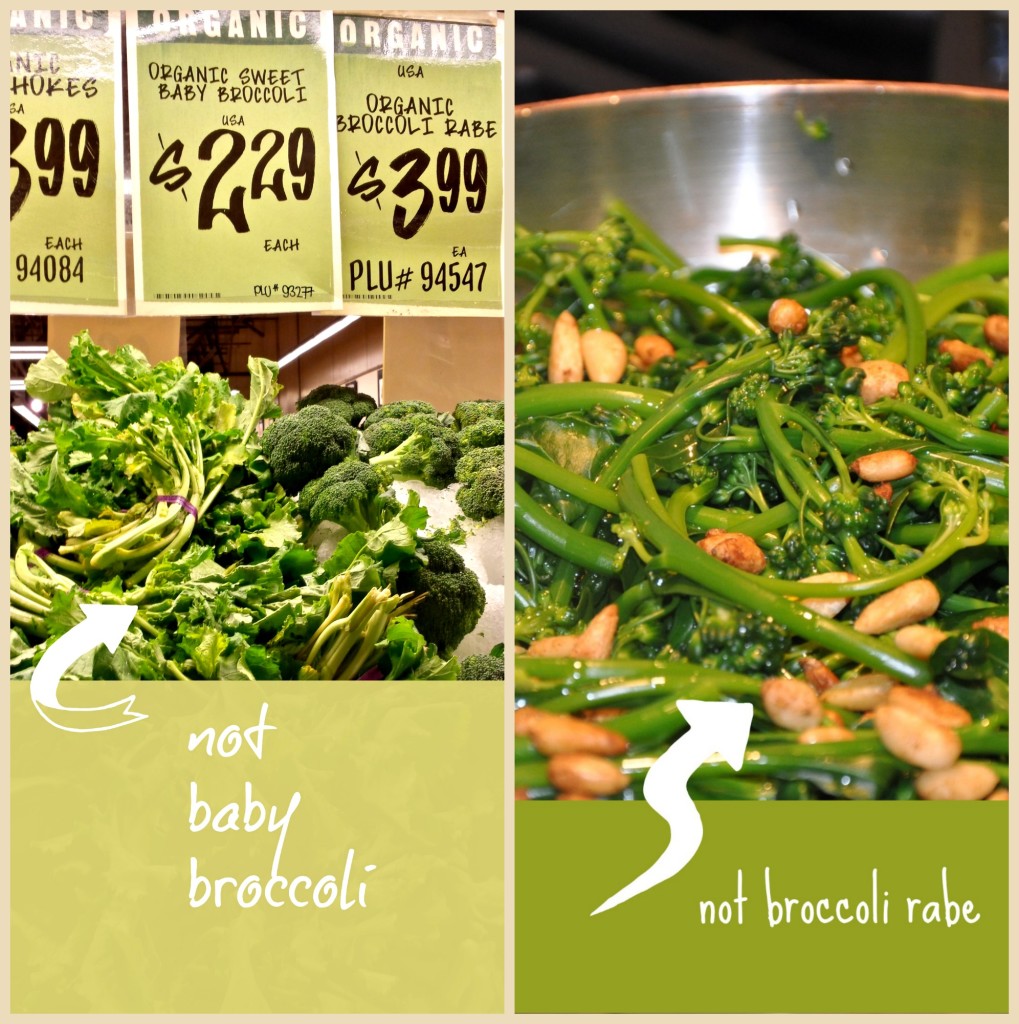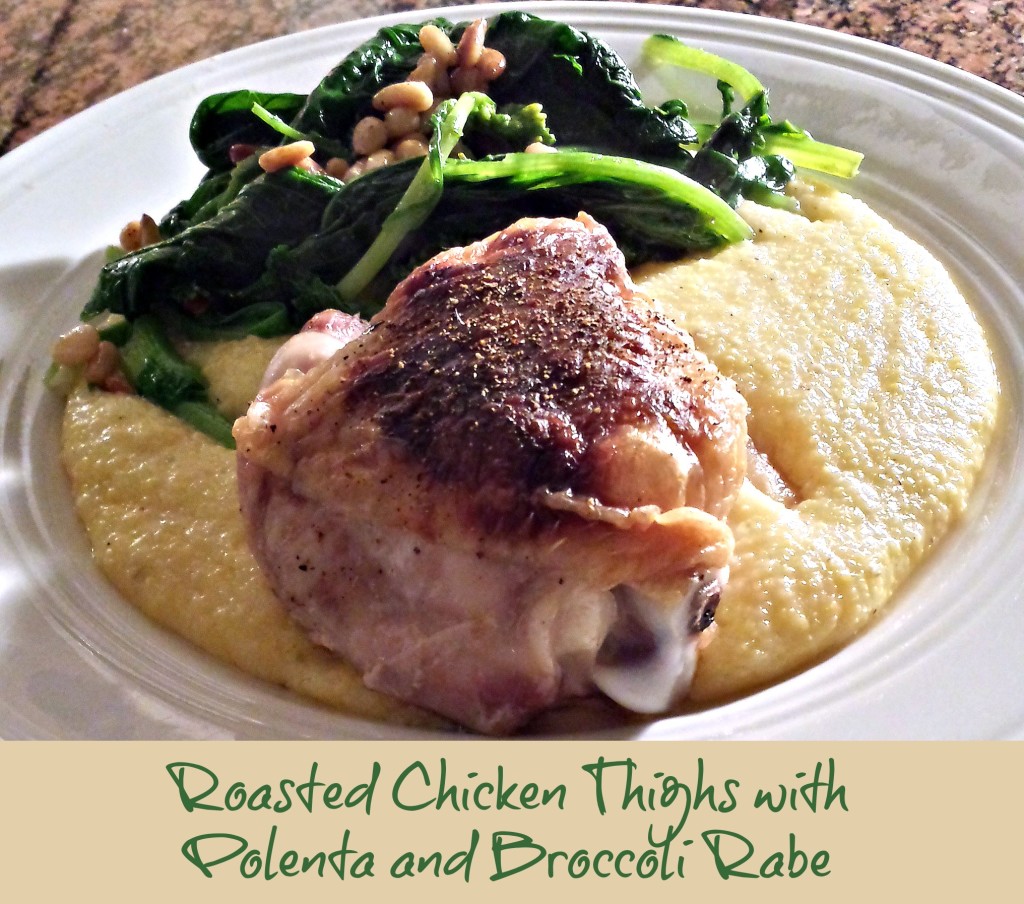I am really into autumn greens this year, and despite the surfeit of kale and collards in my fridge at the moment, I volunteered to test a recipe in a Food52 recipe contest for Your Most Impressive Dinner Party Side featuring broccoli rabe. In the process of shopping for ingredients I learned a few things about broccoli, broccolini, and broccoli rabe. I thought I’d share, since I can’t really post my thoughts on the recipe until after I send them off to the Food52 editors.
As I’ve already established, Central Market is my favorite grocery store on the planet. I love shopping there and discovering new things, and to be honest I tend to ignore the whole broccoli/cauliflower/cabbage part of the produce section. Largely this is because they aren’t my favorite vegetables, and I find myself stonewalling when faced with the whole procedure of chopping a large head down to useable pieces.
Today I went looking for broccoli rabe and found myself totally confused, looking at the leafy greens that I thought were broccoli rabe which were displayed under a sign for organic sweet baby broccoli. Then I went to verify the ingredients on the recipe’s site, and that photo added to my confusion, since it seems to be baby broccoli, not broccoli rabe!
I did a quick spot of research and learned the following:
- Broccoli rabe is part of the same genus as broccoli, but it’s more closely related to the turnip family
- Baby broccoli, also known by the trademarked name broccolini, is not young broccoli, but is a cross between broccoli and Chinese kale
- The “sweet baby broccoli” sign above refers to a different hybrid of baby broccoli, so it’s just another version of broccolini, but it’s definitely not young broccoli
I went ahead and made the recipe as written, using broccoli rabe rather than the baby broccoli pictured in the photo. I’ve had broccoli rabe at restaurants before, but this was my first time making it at home. I learned a few things, might not repeat some of them, and ended up with an overall pleasing dish.
If you’re looking to try broccoli rabe, look for the leaves and not the little florets. Notably, broccoli rabe doesn’t give off the cabbage-y aroma that so many cruciferous vegetables have. It’s fairly mild, slightly bitter, and not as toothsome as collards or kale can be. I recommend removing the tough stems as they are quite stringy, but using the soft stems along with the leaves. All the reputable recipes I’ve found have recommended blanching the broccoli rabe before sauteeing. I would substitute it in any favorite autumn greens dish.
Do you have a well-loved preparation that might be amazing with broccoli rabe?



